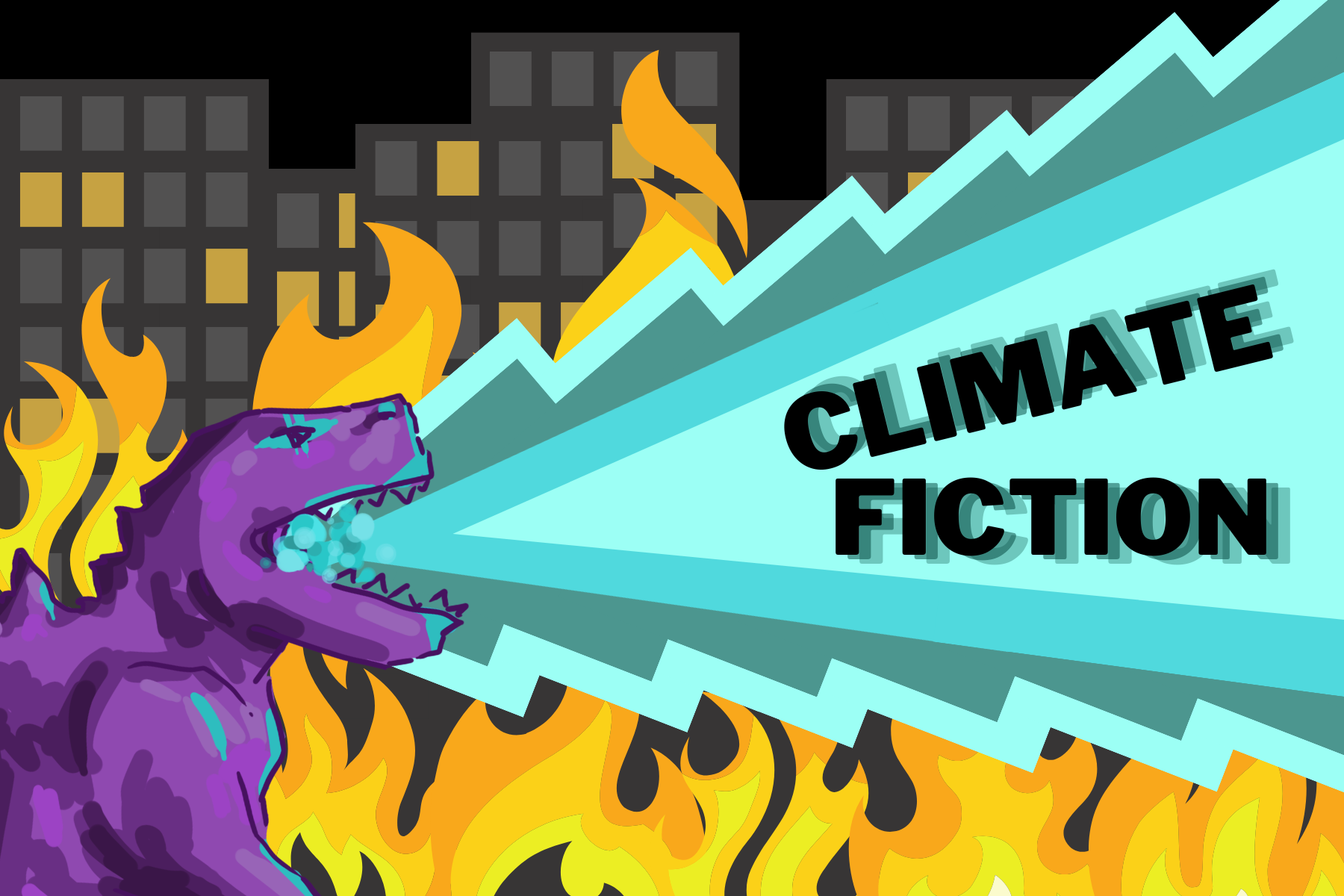It’s pretty well known that monster movies are giant metaphors for social and environmental issues. The original Godzilla was a metaphor for Hiroshima and the atomic bomb, and King Kong can be read as either anti-colonist narrative or an imperialist fever dream, depending on your viewing. It’s a staple of science fiction, in fact – SF being defined by a technological, scientific or environmental advancement.
And some films are direct copies of real world issues, such as Avatar (2009) being a not-even-veiled movie about colonisation, with overt references to the occupation of Native American territory during The American Frontier, while sprinkling in the importance of biodiversity. (Avatar (2022) is more about saving the whales, honestly.)
This landscape of science fiction, inspired heavily by environmental and climate change, is known as climate fiction (or cli-fi, if you want to save two syllables). The term is generally considered to have been coined by news journalist and climate activist, Dan Bloom in 2007/8, but a number of works have been retroactively assigned to the genre since. For example, Jules Verne’s 1989 novel, The Purchase of the North Pole, considers the climate changing due to the tilting of Earth’s axis, and even earlier was Laurence Manning’s 1933 serialised novel, The Man Who Awoke, which Isaac Asimov credited as bringing the energy crisis to his attention some 40 years before it became common knowledge in the 1970s.
Dune (1965) is said to be an early work of climate fiction, for its themes of ecology and environmentalism, and Octavia E. Butler is considered to have pioneered the genre with her 1990s post-apocalyptic novels, stating that she wrote them “thinking about the future, thinking about the things that we’re doing now and the kind of future we’re buying for ourselves, if we’re not careful”.
More recent examples include April Doyle’s Hive (2022), a speculative novel tackling pollinator decline, and the 2019 Pulitzer Prize-winning The Overstory, by Richard Powers, which addresses deforestation through nine individuals and their relationships with trees.
Going back to movies, there are plenty without a single monster-climate amalgamation to be seen. Most recently was the (mid-tier, in my opinion) Netflix movie Don’t Look Up (2021), which addresses misinformation and mass ignorance in the face of a meteor hitting Earth. It’s like a live action Chicken Little.
Director Bong Joon-ho is incredibly well known for making movies with underlying critical themes. Parasite (2019) deals with social inequality and class conflict, while his 2017 movie, Okja, screams the message of sustainable meat production with a giant, CGI super pig and the young Korean girl hellbent on saving her life. Also, Steven Yeun is there. And Tilda Swinton. Twice.
The Bong Joon-ho favourite for me, however, is the 2014 cli-fi, Snowpiercer.
Based on the French climate fiction graphic novel, La Transperceneige (1982), and starring Chris Evans and also Tilda Swinton again, Bong Joon-ho imagines a world in which scientists’ attempts to cool down the ever-warming atmosphere results in a new, unliveable ice age. Billions are killed and all that’s left of humanity is on a singular train, travelling around and around the Earth forever. It’s not just about the consequences of climate change, but also about social class and revolution; points that are highlighted even more so in the Daveed Diggs and Jennifer Connelly-led reimagining of this film in the 2020 Netflix TV series.
Now, if you pay attention when interacting with climate fiction, there’s a common theme you’ll pick up on: hope.
The stories can go either one of two ways. They’ll either be about the desolation at the end of the world; the regret, the shame, the capitalistic drive into the climate abyss – or they’ll be about people coming together and trying to change for the better. Even in the monster movies. Even in Mad Max: Fury Road.
Even in Pacific Rim (2013), telling the audience that alien kaiju only want to live on our planet because we’ve made the atmosphere so toxically unliveable that only monsters can thrive. Even in Princess Mononoke (1997), depicting the consequences of nature’s destruction and humanity’s inability to live in harmony. Even in The Day After Tomorrow (2004), in which the Atlantic Ocean’s circulation being disrupted plummets the Earth into a new ice age.
There’s hope.
It’s fairly poignant, I think, that stories of our impending destruction, usually at our own hand, still end with the sun rising, and birds singing, and life continuing on.
Where science fiction exists, there’s usually a point to be made. Whether it’s about technology or social hierarchy – there’s a message being imparted.
Here is the message of climate fiction: things are going to get bad, or they are bad, or some potion of capitalism, government mismanagement and human ignorance has started the steps towards bad – but at the end of the day, it is people who will fix it. Who can fix it. Who will come together with compassion and community, and stand up in the face of fear and ice ages and thinly veiled metaphors for extreme weather events, and figure out how to fix it together. The message of climate fiction is hope.
Art imitates life, after all.
By Bethany Climpson, Sustainability Engagement Assistant
 Sustainability
Sustainability Bethany Climpson
Bethany Climpson 1421
1421


